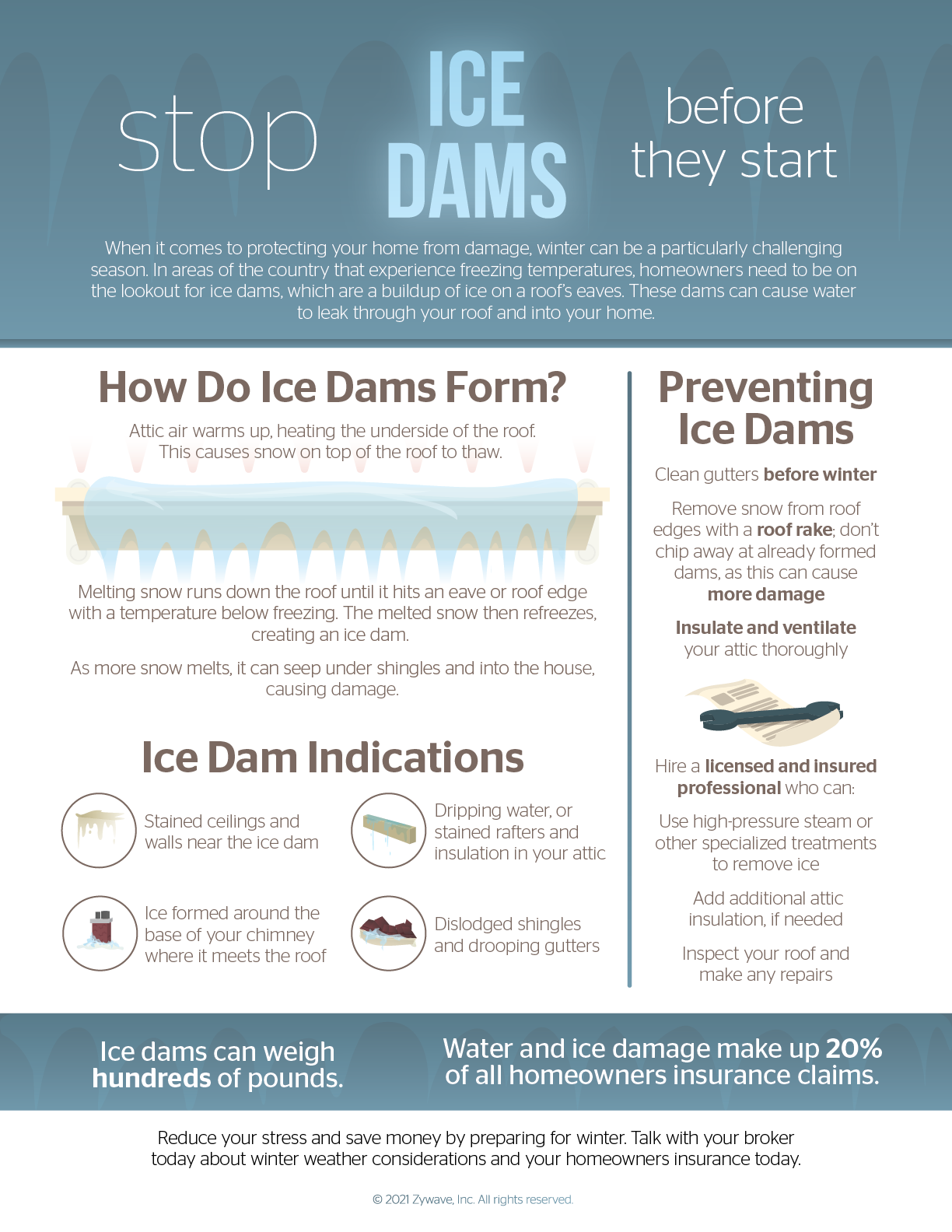Stop Ice Dams Before They Start
Posted March 18, 2022
When it comes to protecting your home from damage, winter can be a particularly challenging season in areas of the country that experience freezing temperatures. Homeowners need to be on the lookout for ice dams, which are a buildup of ice on a roof’s eaves. These dams can cause water to leak through your roof and into your home.
How Do Ice Dams Form?
Attic air warms up, heating the underside of the roof. This causes snow on top of the roof to thaw.
Melting snow runs down the roof until it hits an eave or roof edge with a temperature below freezing. The melted snow then refreezes, creating an ice dam.
As more snow melts, it can seep under shingles and into the house, causing damage.
Ice Dam Indications
- Stained ceilings and walls near the ice dam
- Dripping water, or stained rafters and insulation in your attic
- Ice formed around the base of your chimney where it meets the roof
- Dislodged shingles and drooping gutters
Ice dams can weigh hundreds of pounds.
Water and ice damage make up 20% of all homeowners insurance claims.
Preventing Ice Dams
- Clean gutters before winter
- Remove snow from roof edges with a roof rake; don’t chip away at already formed dams, as this can cause more damage
- Insulate and ventilate your attic thoroughly
- Hire a licensed and insured professional who can:
- Use high-pressure steam or other specialized treatments to remove ice
- Add additional attic insulation, if needed
- Inspect your roof and make any repairs
Reduce your stress and save money by preparing for winter. Talk with your broker today about winter weather considerations and your homeowners insurance today.

